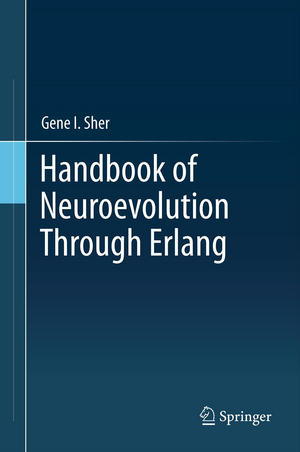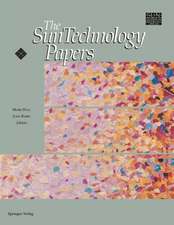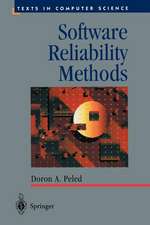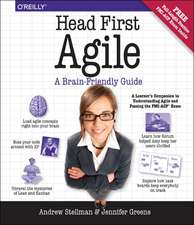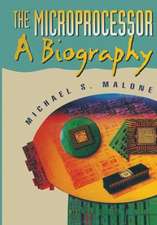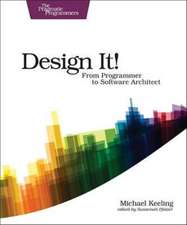Handbook of Neuroevolution Through Erlang
Autor Gene I. Sheren Limba Engleză Hardback – 6 noi 2012
| Toate formatele și edițiile | Preț | Express |
|---|---|---|
| Paperback (1) | 1886.45 lei 6-8 săpt. | |
| Springer – 23 aug 2016 | 1886.45 lei 6-8 săpt. | |
| Hardback (1) | 2387.54 lei 6-8 săpt. | |
| Springer – 6 noi 2012 | 2387.54 lei 6-8 săpt. |
Preț: 2387.54 lei
Preț vechi: 2984.43 lei
-20% Nou
Puncte Express: 3581
Preț estimativ în valută:
456.100€ • 496.57$ • 384.13£
456.100€ • 496.57$ • 384.13£
Carte tipărită la comandă
Livrare economică 21 aprilie-05 mai
Preluare comenzi: 021 569.72.76
Specificații
ISBN-13: 9781461444626
ISBN-10: 1461444624
Pagini: 852
Ilustrații: XX, 831 p. 172 illus.
Dimensiuni: 155 x 235 x 53 mm
Greutate: 13.89 kg
Ediția:2013
Editura: Springer
Colecția Springer
Locul publicării:New York, NY, United States
ISBN-10: 1461444624
Pagini: 852
Ilustrații: XX, 831 p. 172 illus.
Dimensiuni: 155 x 235 x 53 mm
Greutate: 13.89 kg
Ediția:2013
Editura: Springer
Colecția Springer
Locul publicării:New York, NY, United States
Public țintă
Professional/practitionerCuprins
Introduction: Applications & Motivations.- Introduction to Neural Networks.- Introduction to Evolutionary Computation.- Introduction to Neuroevolutionary Methods.- The Unintentional Neural Network Programming Language.- Developing a Feed Forward Neural Network.- Adding the “Stochastic Hill-Climber” Learning Algorithm.- Developing a Simple Neuroevolutionary Platform.- Testing the Neuroevolutionary System.- DXNN: A Case Study.- Decoupling & Modularizing Our Neuroevolutionary Platform.- Keeping Track of Important Population and Evolutionary Stats.- The Benchmarker.- Creating the Two Slightly More Complex Benchmarks.- Neural Plasticity.- Substrate Encoding.- Substrate Plasticity.- Artificial Life.- Evolving Currency Trading Agents.- Conclusion.
Caracteristici
Provides a friendly step-by-step guide on the construction of Topology and Weight Evolving Artificial Neural Network systems from start to finish
Covers novel material for using Erlang in the construction of TWEANN systems
Explains why Neural Network based Computational Intelligence systems map perfectly to Erlang’s architecture, and the importance of this programming language to the future of computational intelligence
Introduces new TWEANN algorithms, with the final result being a concurrent, cutting edge, direct and indirect encoded, plasticity enabled, TWEANN platform
Covers novel material for using Erlang in the construction of TWEANN systems
Explains why Neural Network based Computational Intelligence systems map perfectly to Erlang’s architecture, and the importance of this programming language to the future of computational intelligence
Introduces new TWEANN algorithms, with the final result being a concurrent, cutting edge, direct and indirect encoded, plasticity enabled, TWEANN platform
